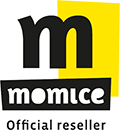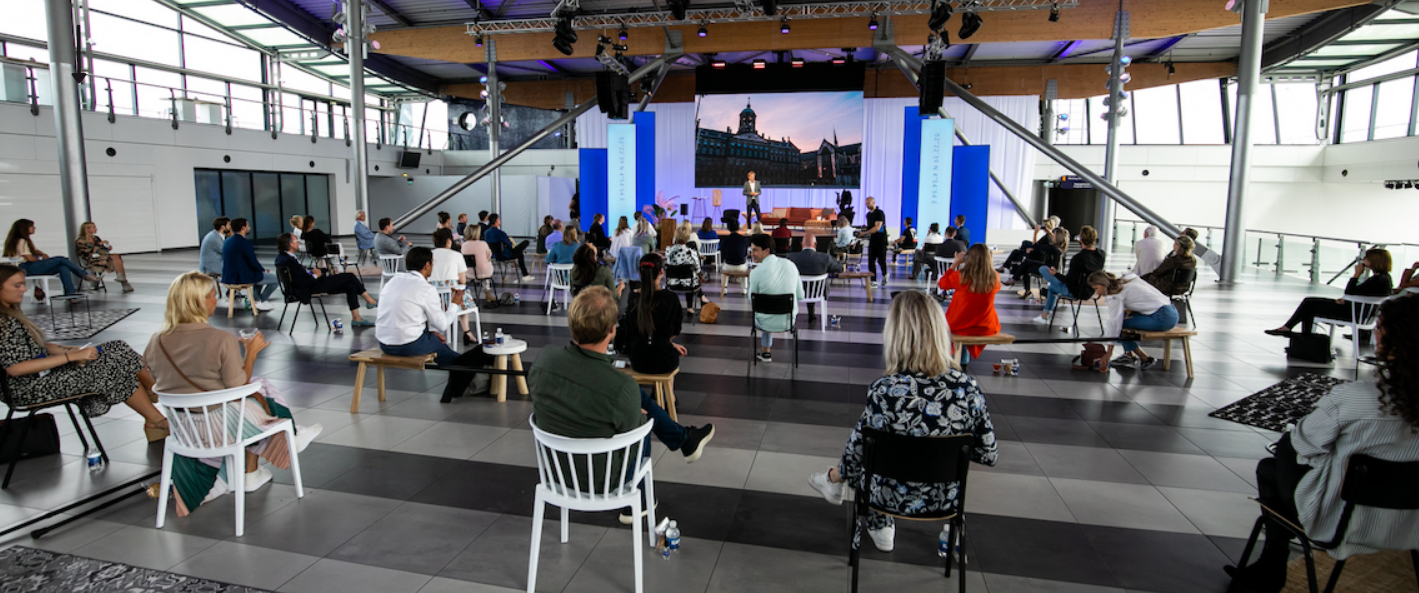With the South African event industry just starting to get to grips with how to trigger COVID flavoured events, the decision between a real-life @ 1.5m social distancing, online or hybrid event is crucial in plotting the path for businesses and their event planning.
Our SES team chatted to colleagues at Momice in the Netherlands, who have been navigating the ups and downs of all options and have highlighted important considerations around which event format to choose.
Safe 1.5m Events
The 1.5m rule is a different event dynamic. Despite fewer people in a larger area, as an event manager, you have to be hyper-vigilant about issues that previously took care of themselves, like crowd control and hygiene measures. Here are a few steps to support your new role:
- Use The Registration Form To Max Benefit: The event registration form is more important than ever. You want to know who is coming so you can manage the maximum number of participants and you need to manage the mandatory health check. It is also a good idea to open a reserve list so that you can fill in empty spaces to make the most of the space.
- Spread The Arrival Times: To avoid the long queues that form as a result of COVID protocols, and to help support social distancing, split participant entry across different arrival times. Let the participants choose which time slot they want to arrive in and explain why it is important they to it! Bear in mind the flow of visitors doesn’t stop at arrival so make sure there are sufficient staff to man the eating areas and cloakrooms, for example.
- Contactless Check-In: Keeping track of participants via check-in and check-out has never been as important but it can mean more contact, so aim to have your visitors check themselves in using entry codes and e-tickets that can be scanned on arrival. Link this scanning to the automatic printing of a name badge they can apply themselves too.
- Clear COVID Communication: Make sure your visitors are well aware that this is a safe event before they even get there. Use your event website to highlight your protocols, repeat these protocols on your event communication and again on your final event reminders. At the event itself make sure the rules are clear and visible. Think of assigning a team member as a COVID protocol officer to ask any questions and monitor the space. Post-event make sure your social media posts and images reflect the safety protocols you set.
- One-Way Traffic Is Key: By providing one-way traffic throughout the location, you minimize the risk of confusion and congestion. Think carefully about the route your visitors should take and provide clear indications. Pay extra attention to busy areas, such as stairs and toilets.
Online Events
The only possibility of bringing groups together during lockdown, online events have grown in popularity but with little time to master the full functionality and navigate the challenges of this medium. With some hard-earned experience, here are some of the most important learnings:
- Online eventing is its’ own profession: Organizing an online event is akin to making television! That’s right, it requires catering, scripts, suitable rooms, studio settings, live-stream software and encoders. So before you say yes to taking your important online, consider a professional live-streaming partner who can support you in format and direction.
- Online programs are not real-life programs: Shorter and more compact than the real-life version, online event program must cater for the viewer, that expects speed and bite-sized information. If you hope to keep your audience captivated and prevent them from dropping out your program has to be captivating, no more than 60min in length and preferably broken down into short ‘topics’ of 15-20 minutes each.
- Interaction is key: Online viewers want to participate and ask questions not always easy when you have to raise your hand, and mute and unmute your microphone. So explore possibilities for audience interaction such as polls, chats or quizzes to involve them in the program.
- Software choice is key: Live-stream software options range from Do-it-Yourself (YouTube Livestream or Zoom) to fully arranged through an external partner. Your format, setting and occasion will determine where you are in the range and if you do “do it yourself” make sure you have a good camera and microphone; pay attention to the light; ensure your connection is solid oh and, check the load shedding schedule!!!!
- Online content is versatile: Record your live-stream and give yourself rich content to use for a long time. Quotes and soundbites from the video are powerful on social channels, and you offer the entire recording to your event audience. If you provide high-quality sound, you can also create a podcast for even further mileage.
Hybrid Events
For higher budget events, the option of combining your real-life event and an online audience is extremely effective BUT…..not altogether simple. If you want to do it right, you have to think beyond an online broadcast of your offline event and consider the following:
- Finding The Tempo: Live events and online events have very different tempos so you need to plan which parts you want to broadcast online and which not. For example, skip the (long) live introduction and go online with a word of welcome and applause from the room as a way of keeping the online audience engaged. Remember they ‘click away’, they are not coming back!
- Careful Formatting: An online program requires more than just placing a camera at the back of the room. You need to create an exciting online experience and this means multiple cameras and angles, good sound and lighting and ideally professional direction.
- Opportunities For Networking: This is one of the main reasons participants attend events and with online this value-add fades away. But it is possible to bring people into contact with each other online using break-outs, with participants grouped according to background or interest with guest-lists shared for easy contact.
- Interaction Is Key: Experience shows that real-life participants listen ‘passively’, yet when online this has to be an active effort. When combining these two worlds, this has to be planned for and even turned into a fun element, for example, showing the results of an online poll on a large screen and testing the result with the real-life audience.
- Two Formats Two Programs: Hybrid events require a program for online and real-life. And while you can have some elements in both, for example, a keynote speaker or a video that is shown, keep in mind that the experience for both parts is very different.
There is a lot to take in and more decisions than ever to be made. But find solace in the knowledge that all event planners are in the same boat and there is a level of lee-way for learning that you can capitalise on as you work to stimulate the industry. Know too that there are event partners like SES ready with the right solution for you, from tech partners to training and hybrid event management.


